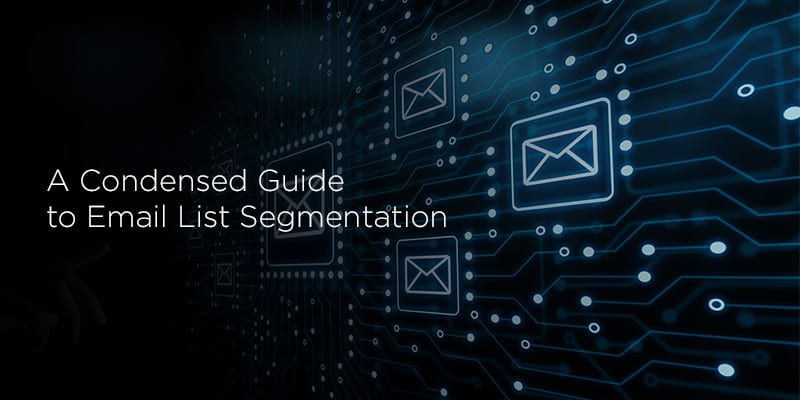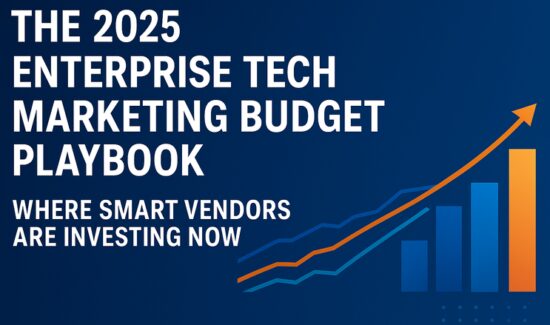A Condensed Guide to Email List Segmentation and its Benefits


Marketing automation has a variety of uses, but one of the biggest advantages it brings to the table is its email campaign and email list segmentation tools. The ability to automate certain aspects of your email campaigns is a big time saver, and allows marketers to experiment with different types of content and A/B testing. But all the testing in the world won’t matter if people are’t opening your emails in the first place. Using email list segmentation, your business can create highly targeted, personal emails that are sure to boost open and click-through rates. Coming up with a productive segmentation strategy can be difficult, but this guide will provide you with the tips necessary to improve your email campaigns and ultimately drive profit.
What is Email List Segmentation
Lead segmentation is the act of breaking your email list subscribers into groups based on a variety of factors or behaviors. By grouping your subscribers, you can create more personalized and targeted emails, eventually leading to better open rates, more sales, and high customer satisfaction. Of course, it’s important to realize that there’s no one singular lead segmentation strategy. Your industry, business size, and business type will affect how you segment your contacts. B2B and B2C strategies will also differ. Regardless of how your organization is run, it’s important to realize that the quality of your email lists will be largely dictated by your segmentation strategy. Being able to target different groups of customers, and recognizing them as individuals with individual interests is key to creating personal, targeted email campaigns.
What Are the Benefits of Email List Segmentation?
- Increased Open Rates, Click-Through Rates, and Conversions: By targeting specific interests or demographics, you make emails more enticing. Customers and leads will be more likely to open an email if they think it’ll benefit them or bring them relevant information. When you give customers content that they actually want to consume, they’ll be much more likely to read through your email and click on a CTA. Even if you don’t manage to bring them to your website, your open rate statistics will show you which emails managed to grab people’s attention, and this information can be used to inform future campaign strategies.
- Decreased Unsubscribe Rates: People typically unsubscribe from emails for two reasons. One is that they find the content uninteresting or irrelevant. The other is that they feel like they receive too many emails, and simply want to clean up their inbox. Although segmentation might not necessarily decrease the number of emails you’ll be sending out, customers will be less likely to unsubscribe if they enjoy the content they’re receiving.
- Increased Customer Satisfaction: It can be hard to toe the line between too much personalization and too little. People enjoy feeling like they’re special, like they’re being treated as an actual human being instead of viewed as just one customer in a sea of other customers. When you send targeted content that addresses people’s individual needs and desires, your emails stop feeling overbearing. If you can solve a lead’s problem, or give them the right product, they’ll be happy to see your future suggestions.
5 Different Ways to Segment Email Lists
As mentioned before, different businesses will segment in different ways. It’s important to identify what metrics are valuable to your company. What kind of people do you want to sell to? Whose attention do you want to grab?
Demographic Data
This means segmenting leads based on traits like age, gender location, job title, income level, and industry. The more information you can get from their initial sign up process, the more you’ll have for demographic segmentation. Nevertheless, you should be careful about asking for too much information. With rising concerns over data privacy and protection, many people will refuse to sign up for a service if they feel like they’re giving away too much valuable data.
Email Engagement
Segment based on active and inactive users. Someone who hasn’t opened an email in three months needs a bit more incentive than a frequent customer who stays up to date with all of your communication. Consider creating special re-engagement campaigns that offer incentives like discounts or rewards. On the other hand, perhaps you’re doing well with a large, active subscriber count. Consider putting more effort towards engaging those subscribers, and driving more repeat sales and engagement.
Past Purchases
Consider segmenting based on if a customer bought something that will eventually need to be replaced, refilled, or renewed. Time your emails so that they line up with when the customer would need it the most. If they don’t need a replacement or renewal, suggest similar items or services. Also consider how frequently they utilize your services. If they purchased a seasonal product, you can send emails based on other seasonal items.
Amount Spent
A customer’s budget has an immense impact on how much they will buy from you, and how frequently. Use a customer’s expense history to determine their price range and predict their future purchasing behavior. Shoppers with high disposable incomes behave differently than brand-loyal enthusiasts, or customers motivated by discounts and sales. Additionally, if your company utilizes a freemium model, make sure to keep separate segments for paying and free customers. Free users are prime targets for upgrades, but customers who have already paid won’t want to hear a sales pitch. Keep them engaged, informed, and interested in your organization.
Self Segmentation
It’s also possible to simply ask your audience what they’re interested in. While this shouldn’t be your main source of segmentation inspiration, it’s a great way to get more information about subscribers who are actively interested in your organization. Let them indicate their interests or demographic information, and make sure they can update or change it again in the future. This can also be done through online surveys or quizzes.
If you’re looking for more marketing tips, check out our Five Strategies for Reducing and Avoiding Email List Churn.





















